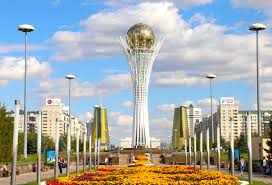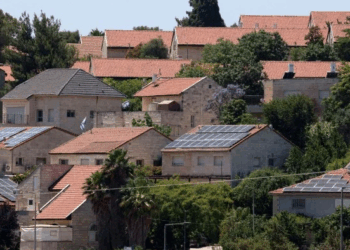
Kazakhstan achieved political and important successes, among the 30 most consolidated by 2050. Although a young and modern country, it has a great cultural wealth, heritage of the historical civilizations that inhabited that territory. In his message to the Kazakh people, on this special date, President Nursultan Nazarbayev makes his vision clear about the importance of narrative to what it is to become what it is today.
Among the actions intended by the government is the creation of a historical and archaeological movement in all schools, art galleries and museums, as well as sculptures in honor of the famous historical figures, as well as the production of several documentaries, films and television series about civilizational history.
According to the message, modern Kazakhstan is undoubtedly connected and developed from the historical societies and civilizations that inhabited the territory now known as the Kazakh people. “There is a responsibility of every citizen to help preserve a comprehensive history of their nation”, said the president.
Nazarbayev cites four reasons for understanding modern Kazakhstan through its ancient history: The quasi-state associations that grew up before the formal formation of that country, the many cultural achievements reached throughout the world have their foundations in that region and the fact that the ancestors have a connection with the most advanced technological innovations of their time. The fourth reason lies in the names of some Kazakh tribes and clans being several hundred years older than the term ‘Kazak’, suggesting that a history of that nation ‘is not a comprehensive history of the region – the Sakas, the Huns and the Proto . “All Turkish ethnic groups played a role in the ethno genesis of Kazakhstan,” the president said.
According to Nazarbayev, there is a responsibility of every citizen to help preserve a comprehensive history of their nation and, in the light of that, announced the “seven facets of the Great Steppe” – a common history of the many ethnic groups who lived in Kazakhstan for many hundreds of years. See a summary of them released by the country’s embassy in Brazil.
Seven Facets of the Great Steppe
Many objects that now form an essential part of modern life and culture originated in Kazakhstan. The ancestors of the Kazakhs have repeatedly changed the course of political and economic history in vast areas of Eurasia.
- Culture of horsemanship: The domestication of horses first took place in the territory of modern Kazakhstan, as well as the culture of horsemanship which developed. The ancestors of Kazakhstan were the first to create protective armor for the horse and the rider from armor plates.
- Ancient Metallurgy of the Great Steppe: With its vast metal deposits, Kazakhstan was one of the earliest centers for the establishment of metallurgy, including the production and smelting of bronze, copper, lead, iron, silver and gold.
- Animal Style: The use of animal images in everyday life was a symbol for the Kazakh ancestors of the interrelationship between man and nature, pointing to the spiritual guides of the steppe people. These images were often produced using the highest production techniques of the time, including casting and casting of copper and bronze, and the complex manufacture of gold sheets.
- Golden Man: In 1969, ‘Tutankhamun of Kazakhstan’ was discovered in Issyk. The craftsmanship of the gold warrior revealed a rich mythology, reflecting the power and aesthetics of the steppe civilization.
- Cradle of the Turkish world: Altai is of great importance for the history of the Kazakhs and other peoples of Eurasia. These majestic mountains not only decorated the lands of Kazakhstan, but they were also the cradle of the Turkish people.
- The Great Silk Road: The unique location of Kazakhstan in the center of Eurasia has contributed to the emergence of transit corridors between different countries and civilizations since ancient times. These routes were transformed into the Great Silk Road system – a transcontinental network of trade and cultural ties between East and West, North and South of Greater Eurasia.
- The birthplace apples and tulips: The foothills of Alatau are the historic homeland of apples and tulips, and Kazakhstan is the guardian of the world’s original apple tree – Sievers apple tree. Around the world, there are now over 3,000 varieties of cultivated tulips, most of which are descended from ancient local flowers of Kazakhstan.
Modernization of historical identity
Celebrating and understanding the “seven facets of the Great Steppe”, fundamental to Kazakhstan’s worldview and to the nation’s past, present and future, will require great efforts to sustain and sustain. The Government of Kazakhstan has proposed a series of projects to assist these efforts, which are seen as a continuation of the ‘Ruhani Zhangyru’ programme:
1 – Archive 2025: Fundamental research of all domestic and foreign archives, beginning with antiquity and reaching to the present day. This will include efforts to promote systematic and long-term involvement with national and international archives. The project will also involve the creation of a historical and archaeological movement in all schools and museums in Kazakhstan.
2- The great names of the Great Steppe: The territory of Kazakhstan has already been home to a number of significant figures in the history of the ancient world. The commemoration of these figures will involve several initiatives:
A – Creation of sculptures in honor of the famous historical figures of Kazakhstan, including information on their achievements.
B- Formation of a gallery of images and works of art to promote the achievements of great historical thinkers, poets, writers, musicians, actors and artists.
c- Creation and dissemination of a popular scientific series ‘Outstanding Personalities of the Great Steppe’.
3- The genesis of the Turkish world: Kazakhstan is the ancestral homeland of the Turks. The project “Turkish civilization: from the earliest times to the present” will involve the display of ancient Turkish artefacts in museums around the world as part of the World Congress of Turkologists in Astana in 2019 and the Cultural Days of Turkish ethnic groups. This project will also involve the creation of a unique, ‘Wikipedia’ style online library of ordinary Turkish works for which Kazakhstan can be a moderator.
4 – The Museum of Ancient Art and Technology of the Great Steppe: The collection and presentation of ancient art and technology from the entire territory of Kazakhstan, to promote knowledge of our ancestors and encourage tourism to Kazakhstan.
5.- A Thousand Years of Folklore and Music: A digital anthology of steppe folklore, containing the finest examples of verbal folk art by the heirs of the Great Steppe over the last millennium, including tales, legends, stories and epics. Together, a collection of the “ancient motifs of the Great Steppe” will also be compiled, including significant works created for traditional Kazakh musical instruments such as kobyz, dombra, sybyzgy and sazsyrnay.
6- History in film and television: Production of various documentaries, films and television series on the civilizational history of Kazakhstan, with a particular focus on the production of high quality films and performances for children.
Cazaquistão: celebrando o futuro e enaltecendo o passado
O país completou, nesse mês de dezembro, 27 anos de independência, de autonomia divulgando uma agenda positiva

Entre as ações pretendidas pelo governo, está a criação de um movimento histórico e arqueológico em todas as escolas, galerias de arte e museus, como ainda de esculturas em homenagem às famosas figuras históricas, além da produção de vários documentários, filmes e séries de televisão sobre a história civilizacional.
Segundo a mensagem, o Cazaquistão moderno está indubitavelmente ligado e desenvolvido a partir das sociedades e civilizações históricas que habitavam o território hoje conhecido como do povo cazaque. “Há uma responsabilidade de cada cidadão em ajudar a preservação de uma história abrangente de sua nação”, disse o presidente.
Nazarbayev cita quatro razões para se compreender o Cazaquistão moderno por meio de sua história antiga: As associações quase estatais que cresceram antes da formação formal daquele país, as muitas conquistas culturais alcançadas em todo o mundo têm suas fundações nessa região e o fato de os ancestrais terem uma conexão com as inovações tecnológicas mais avançadas do seu tempo. A quarta razão está em os nomes de algumas tribos e clãs cazaques serem várias centenas de anos mais antigos que o termo ‘Kazak’, sugerindo que uma história daquela nação’ não é uma história abrangente da região – os Sakas, os hunos e o Proto. “Todos os grupos étnicos turcos tiveram um papel na etno gênese do Cazaquistão”, disse o presidente.
Segundo Nazarbayev, há uma responsabilidade de cada cidadão em ajudar a preservação de uma história abrangente de sua nação e, à luz disso, anunciou as “sete facetas da Grande Estepe” – uma história comum dos muitos grupos étnicos que viveram no território do Cazaquistão por muitas centenas de anos. Veja um resumo delas divulgado pela embaixada do país no Brasil.
Sete Facetas da Grande Estepe
Muitos objetos que agora formam uma parte essencial da vida moderna e da cultura se originaram no Cazaquistão. Os ancestrais dos cazaques repetidamente mudaram o curso da história política e econômica em vastas áreas da Eurásia.
- Cultura de equitação: A domesticação de cavalos ocorreu primeiramente no território do moderno Cazaquistão, assim como a cultura de equitação que se desenvolveu. Os ancestrais do Cazaquistão foram os primeiros a criar armaduras de proteção para o cavalo e o cavaleiro a partir de placas de blindagem.
- Metalurgia antiga da Grande Estepe: Com seus vastos depósitos de metal, o Cazaquistão foi um dos primeiros centros para o estabelecimento da metalurgia, incluindo a produção e a fundição de bronze, cobre, chumbo, ferro, prata e ouro.
- Estilo animal: O uso de imagens de animais na vida cotidiana foi um símbolo para os ancestrais cazaques da inter-relação entre homem e natureza, apontando para os guias espirituais do povo estepe. Estas imagens foram muitas vezes produzidas usando as mais altas técnicas de produção da época, incluindo a fundição e fundição de cobre e bronze, e a complexa fabricação de folhas de ouro.
- Homem de Ouro: Em 1969, ‘Tutankhamon do Cazaquistão’ foi descoberto em Issyk. A perícia artesanal do guerreiro de ouro revelou uma rica mitologia, refletindo o poder e a estética da civilização da Estepe.
- Berço do mundo turco: Altai é de grande importância para a história dos cazaques e outros povos da Eurásia. Estas majestosas montanhas não apenas decoravam as terras do Cazaquistão, mas também eram o berço dos povos turcos.
- A Grande Rota da Seda: A localização única do Cazaquistão, no centro da Eurásia, contribuiu para o surgimento de “corredores” de trânsito entre diferentes países e civilizações desde os tempos antigos. Essas rotas foram transformadas no sistema da Grande Rota da Seda – uma rede transcontinental de comércio e laços culturais entre Oriente e Ocidente, Norte e Sul da Grande Eurásia.
- O berço das maçãs e tulipas: O sopé do Alatau é a pátria histórica de maçãs e tulipas, e o Cazaquistão é o guardião da macieira original do mundo – a macieira Sievers. Em todo o mundo, existe agora mais de 3.000 variedades de tulipas cultivadas, a maioria das quais são descendentes de antigas flores locais do Cazaquistão.
Modernização da identidade histórica
A comemoração e a compreensão das “sete facetas da Grande Estepe”, fundamentais para a visão de mundo do Cazaquistão e para o passado, presente e futuro da nação, exigirão grandes esforços para manter e sustentar. O Governo do Cazaquistão propôs uma série de projetos para ajudar esses esforços, que são vistos como uma continuação do programa ‘Ruhani Zhangyru’:
- Arquivo 2025: Pesquisa fundamental de todos os arquivos nacionais e estrangeiros, começando pela antiguidade e chegando até os dias atuais. Isso incluirá esforços para promover o envolvimento sistemático e de longo prazo com os arquivos nacionais e internacionais. O projeto também envolverá a criação de um movimento histórico e arqueológico em todas as escolas e museus do Cazaquistão.
- Os grandes nomes da Grande Estepe: O território do Cazaquistão já foi o lar de uma série de figuras significativas na história do mundo antigo. A comemoração destes números envolverá várias iniciativas:
- Criação de esculturas em homenagem às famosas figuras históricas do Cazaquistão, incluindo informações sobre suas conquistas.
- Formação de uma galeria de imagens e obras de arte para promover as realizações de grandes pensadores históricos, poetas, escritores, músicos, atores e artistas.
- Criação e divulgação de uma popular série científica ‘Personalidades destacadas da Grande Estepe’.
- A gênese do mundo turco: o Cazaquistão é a pátria ancestral dos turcos. O projeto “civilização turca: desde os primórdios até o presente” envolverá a exibição de artefatos turcos antigos em museus ao redor do mundo, como parte do Congresso Mundial de Turkologists em Astana em 2019 e os Dias de Cultura de grupos étnicos turcos. Esse projeto também envolverá a criação de uma biblioteca on-line única, em estilo ‘Wikipédia’, de obras turcas comuns, para as quais o Cazaquistão pode ser um moderador.
- O Museu de Arte Antiga e Tecnologia da Grande Estepe: A coleta e apresentação de arte e tecnologia antigas de todo o território do Cazaquistão, para promover o conhecimento de nossos ancestrais e incentivar o turismo para o Cazaquistão.
- Mil anos de estepe folclore e música: Uma antologia digital do folclore estepe, contendo os melhores exemplos de arte folclórica verbal pelos herdeiros da Grande Estepe ao longo do milênio passado, incluindo contos, lendas, histórias e épicos. Em conjunto, uma coleção dos “motivos antigos da Grande Estepe” também será compilada, incluindo trabalhos significativos criados para instrumentos musicais cazaques tradicionais, como o kobyz, dombra, sybyzgy e sazsyrnay.
- História no cinema e na televisão: Produção de vários documentários, filmes e séries de televisão sobre a história civilizacional do Cazaquistão, com um foco particular na produção de filmes e espetáculos de alta qualidade para crianças.







